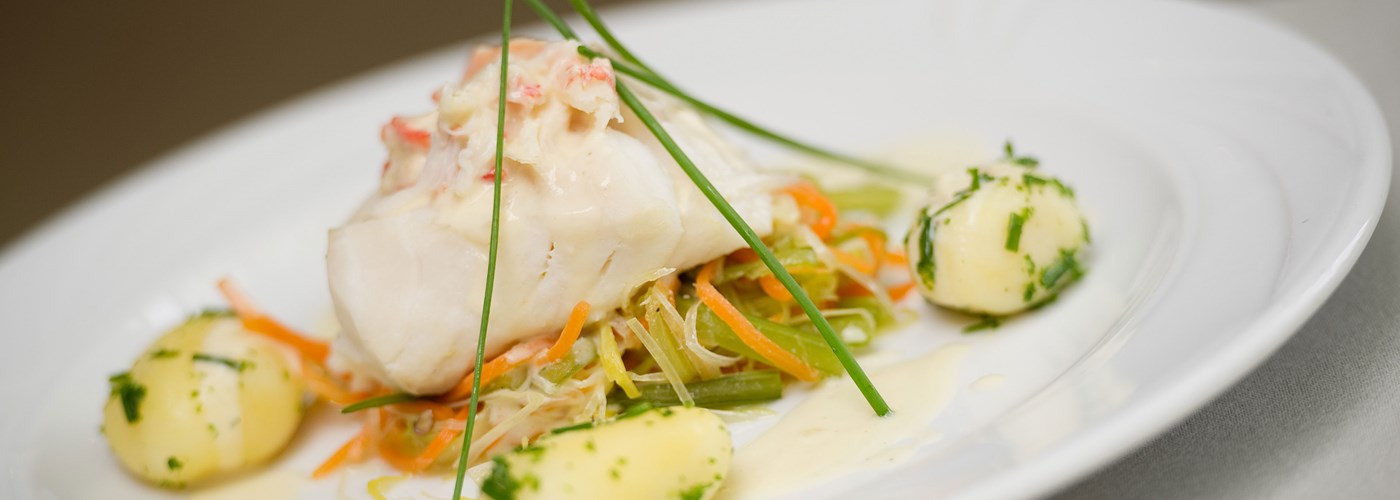Icelandic Food
The most important ingredient in Icelandic cuisine is location. Iceland is blessed with an abundance of fresh water, clean nature and fertile fishing grounds, while geothermal energy makes it possible to supply a year-round offering of fresh vegetables, grown locally in organic greenhouses.

In the past few years, Iceland has emerged as one of Europe's most dynamic gastronomic destinations, full of exciting places to taste thrilling new recipes. Chefs create modern dishes with traditional ingredients, influenced by the philsosophy of the New Nordic Cuisine, where freshness and local seasonal ingredients play a vital role.
A staple of Icelandic cuisine is fresh caught fish. Some of the richest fishing grounds in the North Atlantic can be found off the coast of Iceland, where cool and warm ocean currents meet to create the ideal conditions for fish stocks to thrive. For centuries, fishing has been an essential part of both Icelandic history and culture. It has been the lifeline of the nation, both as a vital part of the diet, and the primary export product. Rigorous standards are in place to maintain sustainable fisheries, and optimal treatment of the catch. Try one of the many Icelandic fishing restaurants, and you will understand why the locals will have you believe they invented the thing.

Icelandic lamb is also a popular ingredient. Sheep roam the open countryside all summer long, feeding on wild berries and moss. Come fall, they are rounded up on horseback, the way it has been done since the time of the earliest settlers. This free-range flavour comes through in succulent Icelandic lamb, praised by chefs all over the world.
IN THE PAST FEW YEARS ICELAND HAS EMERGED AS ONE OF EUROPE'S MOST DYNAMIC GASTRONOMIC DESTINATIONS, FULL OF EXCITING PLACES TO TASTE THRILLING NEW RECIPES.
Chefs throughout Iceland use vegetables and herbs locally grown in geothermally heated greenhouses around the country, making sure you enjoy the best quality produce available. Iceland's dairy products are also becoming famous for their wholesome flavour, especially the yoghurt-like Skyr, now a big seller in Whole Foods stores in the US.
Fish and lamb are traditional, but most restaurants will also include beef, poultry, pork, game, seabirds, lobster, shrimp and scallop on their menus, as well as vegetarian dishes. You will also find many specialist restaurants, such as Indian, Pakistani, Korean, Chinese, Thai, Filipino, Japanese, Italian, French, Spanish, Danish, American and Mexican.
Street eats are a must for visitors, especially Iceland's favorite snack, the pylsa, or hot dog. Say, "eina med ollu", when ordering and you'll get a hot dog boldly topped with the works: crunchy fried onions, ketchup, sweet mustard, raw onions and curry remoulade sauce.
For the few daring souls, traditional Icelandic fare is of course widely available. In the era preceding modern day storage technology— i.e. the fridge—food was traditionally stored using more primitive methods. This traditional food consists of pickled, salted, cured, or smoked fish and meat of various kinds. In order to survive the long winter months, all parts of the animal were consumed. Don't be surprised to find fermented shark, singed sheep heads or pickled ram's testicles on the menu of speciality restaurants. Try them at your own risk.


